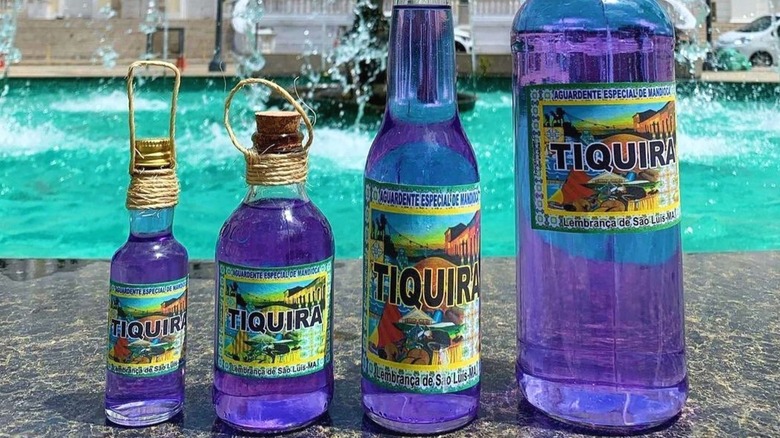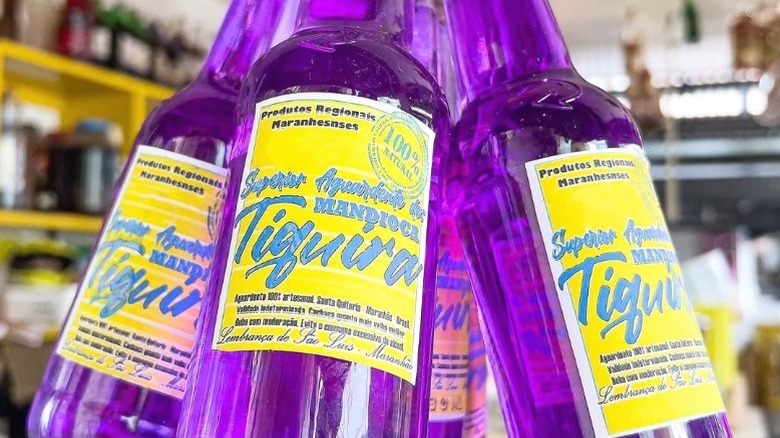Brazil's Oldest Spirit Is One That's Mostly Made Illegally
The beautiful country of Brazil is famous for many things — the Amazon Rainforest, bossa nova music, a bunch of frighteningly intense online stans — but the spirit known as tiquira is not necessarily one of them. When people think of Brazilian alcohol, the first thing that comes to mind is usually cachaça, a rum-like liquor made from the fermented juice of sugarcane. But tiquira long predates cachaça, which was invented around 500 years ago, once Portuguese sugar plantations were established in Brazil. Tiquira, on the other hand, has existed in some form or another (like its lower-alcohol cousin, cauim) for thousands of years, and still exists today — even though much of it is technically illegal. (Tiquira, like moonshine, straddles a legal line.)
Indigenous Brazilians made the liquor from the cassava root, a staple crop which can also be called manioc, yuca, and "very poisonous." If consumed raw, cassava can cause vomiting, partial paralysis, and even death. Luckily, it can be made edible by processing, cooking, and (indeed) fermenting. (Yuca also makes a great french fry substitute.)
Tiquira is mostly confined to one state in Brazil
Tiquira is somewhat obscure even in Brazil; it's only popular in one state, Maranhão, located in the northeast. But once you visit the state's largest city, São Luís, it's difficult to miss. The liquor is often sold hanging in bunches from market stalls, and the bottles (as well as the liquor within them) are often colored a bright, eye-catching shade of purple. (The neon color is likely artificial, but is often said to be provided by tangerine leaves.)
There are brands that sell tiquira, but not very many. Cachaça, the liquor of choice in most of Brazil, is easier to make, as the sugarcane juice does not require the same processing before use that the cassava root does. That said, the vast majority of tiquira consumed in Maranhão is produced illegally, moonshine-style, by backyard distillers, who use cassava flour as the base (which is already processed and toxin-free). If drinking liquor made from a potentially toxic root makes you raise your eyebrows, well, it's worked for them so far. (And just wait until you hear about the Brazilian tradition of cerveja na budinha, or drinking a beer in the ass.)

